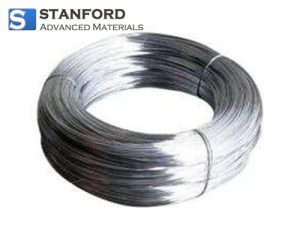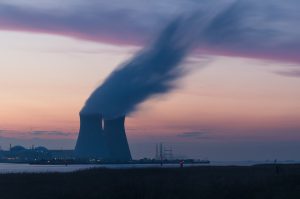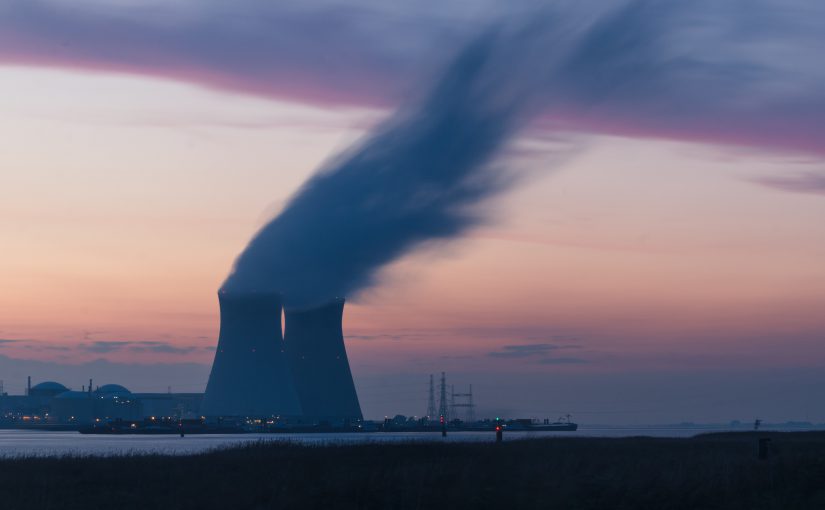Compared with traditional iron, copper, nickel, and other metal elements, zirconium has a lower density and smaller thermal expansion coefficient. In addition, zirconium has a low thermal neutron absorption cross-section (only 0.18×10-28 m2) and good corrosion resistance, which makes zirconium and zirconium alloys have a wide range of applications in the nuclear industry, aerospace and other special fields.
Zirconium and its alloys have been widely used as cladding materials in nuclear reactors. Zirconium and its alloys reflect neutrons back into the reactor more efficiently than stainless steel, greatly saving uranium fuel; Zirconium alloy has good corrosion resistance at high temperature and high-pressure steam of 300 ~ 400 ℃, which also makes the reactor have a long service life. Therefore, zirconium is regarded as the first metal in the atomic age.

Development status of zirconium and its alloys
Zirconium, which is found in the earth’s crust at about 220 g /t, ranks 20th, ahead of other common metals such as copper, nickel, lead, and cobalt. Initially, zirconium alloys were mainly used as cladding materials in the nuclear industry. In recent decades, zirconium alloys have been widely used in the chemical industry, medical industry, and some special fields.
Zirconium alloy for nuclear use
Zirconium alloys have been widely used in the nuclear industry because of their very low thermal neutron absorption cross-section and good resistance to high temperature and pressure corrosion. France, the United States, Germany, and Russia have developed a series of zirconium alloys for nuclear use. At present, Zr-2, Zr-4, Zr2.5nb and ZIRLO, E635, M5, and NDA zirconium alloys have been successfully applied in the nuclear industry. These newly developed zirconium alloys have lower radiation creep properties and better resistance to iodine stress corrosion. In addition, they are able to meet the requirements of high burnup of the fuel assemblies, increasing the service life of the assemblies to 30 years.

Corrosion-resistant zirconium alloy
Zirconium has excellent corrosion resistance against most organic acids, inorganic acids, strong alkalis, and some molten salts. Therefore, zirconium can be used to improve the service life of some key components in corrosive environments. Another way to improve the corrosion resistance of alloy parts is surface pretreatment. In industry, zirconium is placed in high-temperature air to obtain a dense oxide film, so as to improve the corrosion resistance and erosion resistance of zirconium and its alloys. The results show that the corrosion rate of zirconium treated by surface oxidation in sulfuric acid medium is only 5% of that of pure zirconium, but the erosion resistance is increased by twice.
At present, zirconium is widely used as corrosion-resistant material in the chemical industry, and it has been widely used in the heat exchanger, dike washing tower, reactor, pump, valve, and corrosion medium pipeline. For example, zirconium alloys have been used to produce concentrated and hydrolyzed tubes in hydrogen peroxide production lines, while zirconium pressure reducing valves, agitators and flow meters are used in fertilizer production, sewage treatment, and dye industries.
Biomedical materials are a new high-tech material in recent years, and biomedical alloys must have good compatibility and corrosion resistance with the environment of biological fluids. Zirconium is valued by researchers for its good biocompatibility, elastic modulus similar to bone and corrosion resistance. Ti6Al4V, a titanium alloy implanted earlier in hard tissues of the human body, has an elastic modulus of nearly 110 GPa, which is much higher than the elastic modulus of 15 ~ 30 GPa of natural bones of the human body.
High-strength zirconium alloy
In the fields of space exploration, deep-sea exploration, and high-speed railway, there are often some special operating environments, such as the alternating temperature environment of -200 ~ 200 ℃, continuous space irradiation, and relative motion of structural parts, etc. Under these special circumstances, long-serving structural components are often faced with fatigue damage, dimensional instability, atomic oxygen erosion, and friction wear. At present, the structural parts used in these special fields are mainly made of 20Cr, GCr15, and other alloy steel materials, which often have problems such as poor radiation resistance, easy damage of moving parts, high density, and high cost.
Compared with traditional alloy steels, zirconium and its alloys have several important potentials:
- The thermal expansion coefficient of zirconium is small and the size structure is stable, so it has the potential to produce precise structural components;
- It has the potential of resisting space radiation damage;
- It has the potential to resist atomic oxygen erosion;
Therefore, zirconium and its alloys are expected to adapt to unconventional environmental conditions in special fields and have the potential to be used as structural components in special environments.
Please visit http://www.samaterials.com for more information.

I get pleasure from, cause I found exactly what I was looking for.
You have ended my 4 day lengthy hunt! God Bless you man. Have a great day.
Bye
This is a bang-up post. Thanks for sharing it!